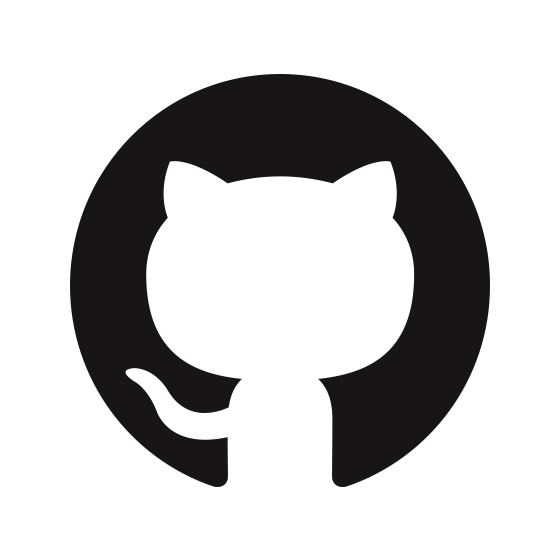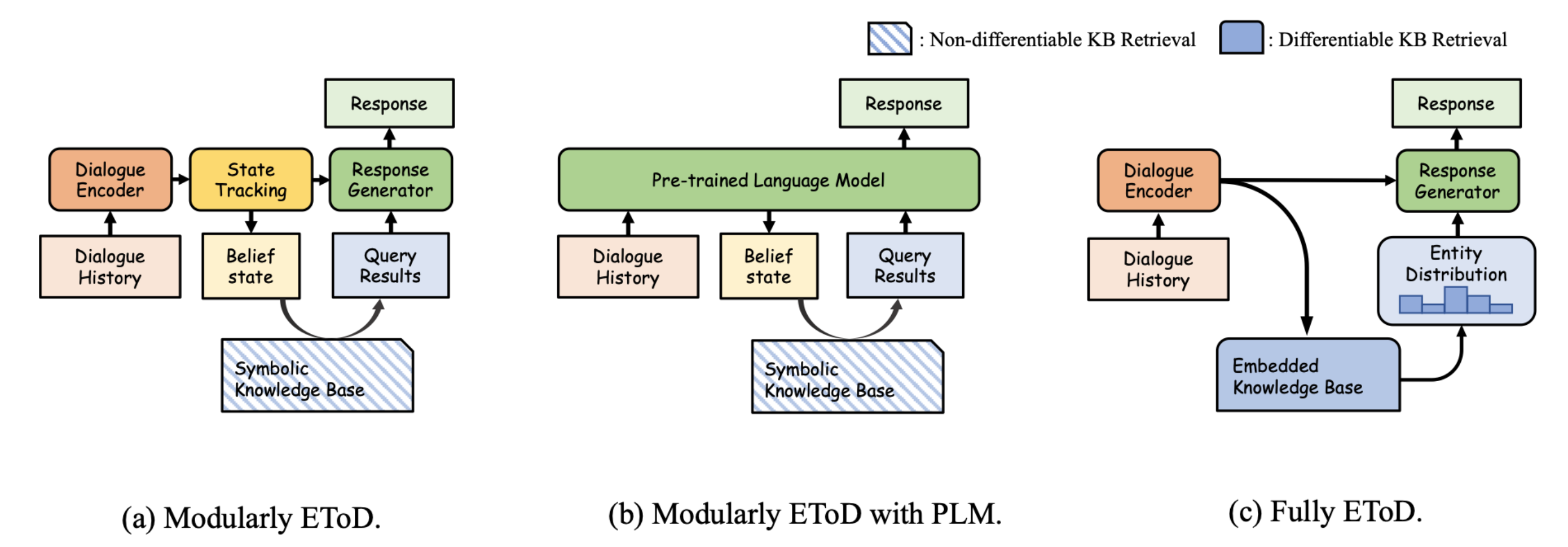🔥 Our paper collection is now available at GitHub
 !
!
Introduction
Task-oriented dialogue systems (ToD) can help users achieve specific goals with natural language interaction such as restaurant reservation or navigation inquiry, which gains increasing attention in both academic research and industry deployment. As shown in Figure(a), traditional ToD models employed a pipeline approach that includes four modular connected components: (1) natural language understanding (NLU) for extracting the intent and core slots of users; (2) dialogue state tracking (DST) for tracing users' belief state given dialogue history; (3) dialogue policy learning (DPL) to decide which dialogue action to take; (4) natural language generation (NLG) for generating dialogue system response.
However, despite its success, there remains a lack of a uniAed perspective of summarizing existing approaches and recent trends, hindering the development of EToD community. To bridge this gap and establish a unified view, we take the First step and present a thorough review of this research field. Specifically, we provide a new taxonomy including
- Modularly end-to-end task-oriented dialogue
- Modularly end-to-end task-oriented dialogue with pretraining models
- Fully end-to-end task-oriented dialogue
In the following are three categories for EToD:

If you find this repository helpful for your work, please kindly cite the following paper.
@misc{qin2023endtoend,
title={End-to-end Task-oriented Dialogue: A Survey of Tasks, Methods, and Future Directions},
author={Libo Qin and Wenbo Pan and Qiguang Chen and Lizi Liao and Zhou Yu and Yue Zhang and Wanxiang Che and Min Li},
year={2023},
eprint={2311.09008},
archivePrefix={arXiv},
primaryClass={cs.CL}
}